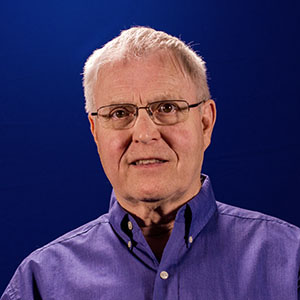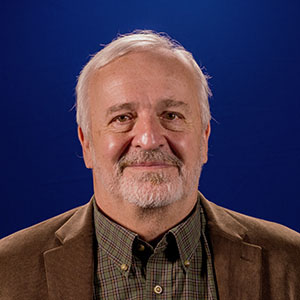Nobel-Winning DNA Research Challenges Evolutionary Theory
In 2015, three scientists won the Nobel Prize in Chemistry for decades of research into DNA—research that reinforces the idea that evolution is mythology and makes the modern evolutionary theory of abiogenesis seem more and more indefensible. It turns out that DNA is inherently unstable, and the preservation of genetic information requires a complex symbiotic relationship between the cell and DNA that is so interdependent that neither could have arisen independently of the other.
New Insight into DNA and the Cell
DNA (deoxyribonucleic acid) is the giant organic molecule which carries and preserves an organism’s genetic information. DNA is essential to the growth and reproduction of life-forms because precise copying and self-replication of DNA is a critical part of the process of cell division.
Tomas Lindahl, the first Nobel laureate, has demonstrated that the rate at which DNA decays should have made the development of life on Earth impossible.1 The Nobel Committee expresses this on a personal level: “you ought to have been a chemical chaos long before you even developed into a foetus.”2
So why doesn’t our genetic material disintegrate into complete chemical chaos? It is because of molecular repair mechanisms within the cell. The three Nobel laureates “mapped, at a molecular level, how cells repair damaged DNA and safeguard the genetic information.”3 They found that a multitude of molecular systems constantly monitor the genome and repair any damage.
One such mechanism discovered by Lindahl is base excision repair, which explains why our DNA doesn’t collapse. A base of a nucleotide often loses an amino group and becomes unable to form a base pair, thus breaking the DNA chain. But an enzymedetects the error, and other enzymes repair it so that the DNA can replicate properly.
Paul Modrich, the second laureate, discovered another molecular mechanism called mismatch repair. Replication errors often occur as the DNA is copied, but Modrich found that enzymes continually detect most of these errors, and other enzymes repair them. The Nobel Committee says this “reduces the error frequency during DNA replication by about a thousandfold.”4
One further issue that DNA must contend with is mutations caused by DNA damage due to radiation and a variety of mutagenic substances. For example, radiation might make two base pairs bind to one another incorrectly. But the third laureate, Aziz Sancar, discovered that through a mechanism called nucleotide excision repair, enzymes will cut out, remove, and replace a damaged DNA strand.
We have long known that the cell could not reproduce without DNA, but we now know that DNA would self-destruct without the cell. It is this complex symbiotic relationship between a cell and its DNA that makes the modern evolutionary theory more difficult to defend.
Climbing Mount Impossible
The theory of chemical evolution or abiogenesis suggests that life arose spontaneously from nonliving matter. Earth is approximately 4.5 billion years old, and life emerged about 1 billion years after Earth’s formation. Our earlier article on abiogenesis discussed calculations by several scientists who have shown that the probability that the chemistry necessary for life self-assembled in only 1 billion years by undirected, random processes is so infinitesimally small as to be essentially impossible. And those calculations don’t even take into consideration the four-letter molecular language (genetic code) with 20 “words” (each representing an amino acid) through which DNA carries the organism’s genetic information. Even simple languages are usually associated with an intelligent agency—not undirected, random action—as is illustrated by the SETI program’s search for extraterrestrial intelligence.
Furthermore, life is more complex than mere chemistry. The life-forms in our world are self-sustaining and self-replicating, and unless these features were in place when the chemistry of life assembled, any life which appeared could neither grow nor reproduce. Self-preservation instincts go beyond the competence of mathematical probability calculations. It seems a miracle would be necessary for all this to come together by undirected, random processes over a time span of only 1 billion years!
Yet the 2015 Nobel Prize in Chemistry now raises the bar even higher. This research shows that for abiogenesis to occur, undirected, random processes must have anticipated the inherent instability of DNA and assembled the cell with the variety of enzymes necessary to prevent the self-destruction of DNA. Additionally, the cell’s chemistry, the self-preservation instinct, and anticipatory DNA repair mechanisms must have all come together at the same instant in time within only 1 billion years; otherwise, any nascent life could not have survived. If the probability barrier to evolution seemed like climbing Mount Improbable before, it has now become climbing Mount Impossible.
Could simple single-celled life-forms emerge and evolve into more complex life? Single-celled life-forms are not so simple. For example, the genome of an aerobic hyper-thermophilic crenarchaeon (a thermophilic archaea, a type of bacteria) consists of 1.7 billion base pairs, which is almost 60 percent of the 2.9 billion base pairs in the human genome.5
How does this impact the modern neo-Darwinian theory of evolution? According to the Nobel Committee, “if genetic information were too unstable no multi-cellular organisms would exist” because evolution requires mutations.6 Yet the DNA repair mechanisms limit the number of mutations.
Although the mutation frequency varies between species and site, it is uniformly quite small. As an illustration, the average mutation rate in humans has been estimated to be only ~2.5 x 10-8 mutations per nucleotide. Most mutations have no effect, and approximately 3 percent are harmful.7 A study of mutation fitness found that advantageous mutations are rare.8 An earlier article estimated that less than 50 new mutations per generation occur in the genes governing human intellectual ability. Of these 50 mutations, one to two are deleterious, and a vanishingly small fraction increase fitness. In other words, the number of favorable mutations—upon which natural selection can operate—is extremely small, and this Nobel-winning research seems to provide an explanation for this.
The discoveries made by the 2015 Nobel laureates serve as another example of how modern science is bringing more and more questions into the theory of naturalistic evolution, adding support to the idea that everything on Earth was created by a higher intelligence.

Hugh Henry received his PhD in physics from the University of Virginia in 1971, retired after 26 years at Varian Medical Systems, and currently serves as lecturer in physics at Northern Kentucky University in Highland Heights, KY. Hugh has also been a participant in RTB’s Visiting Scholar Program.

Daniel J. Dyke received his MTh from Princeton Theological Seminary in 1981 and currently serves as a professor of Old Testament studies at Cincinnati Christian University in Cincinnati, OH. Daniel has also been a participant in RTB’s Visiting Scholar Program.
Endnotes
- The Royal Swedish Academy of Sciences, “The Nobel Prize in Chemistry 2015,” news release, October 7, 2015, https://www.nobelprize.org/nobel_prizes/chemistry/laureates/2015/press.html.
- The Royal Swedish Academy of Sciences, “DNA Repair—Providing Chemical Stability for Life,” October 7, 2015, https://www.nobelprize.org/nobel_prizes/chemistry/laureates/2015/popular-chemistryprize2015.pdf.
- Royal Swedish, “Nobel Prize.”
- Royal Swedish, “Nobel Prize.”
- Yutaka Kawarabayasi et al., “Complete Genome Sequence of an Aerobic Hyper-thermophilic Crenarchaeon, Aeropyrum pernix K1,” DNA Research 6 (April 1999): 83–101, 145–52.
- Royal Swedish, “DNA Repair.”
- Michael Nachman and Susan Crowell, “Estimate of the Mutation Rate per Nucleotide in Humans,” Genetics 156 (September 2000): 297–304.
- Adam Eyre-Walker and Peter Keightley, “The Distribution of Fitness Effects of New Mutations,” Nature Reviews Genetics 8 (August 2007): 610–18, doi:10.1038/nrg2146.




